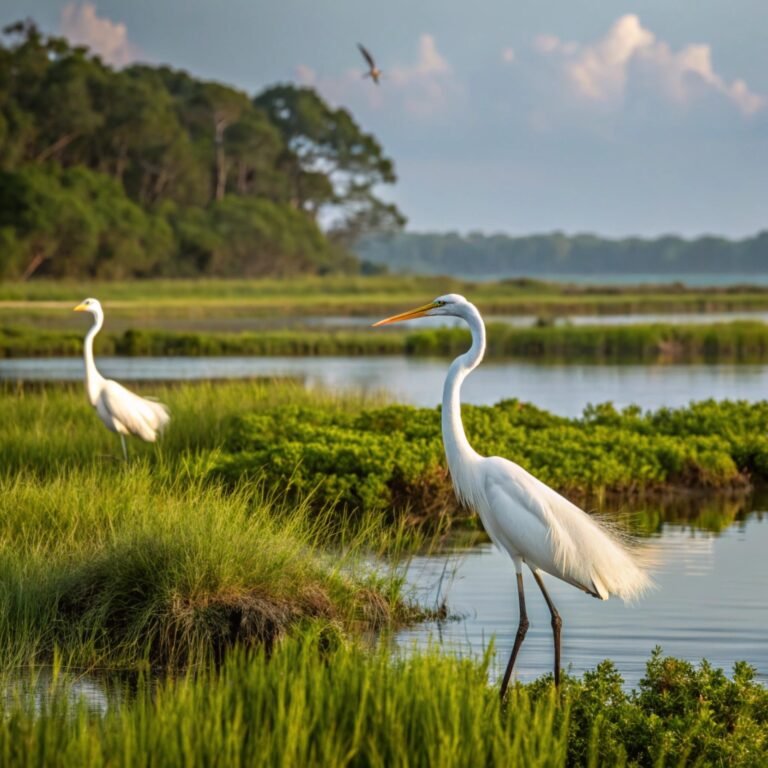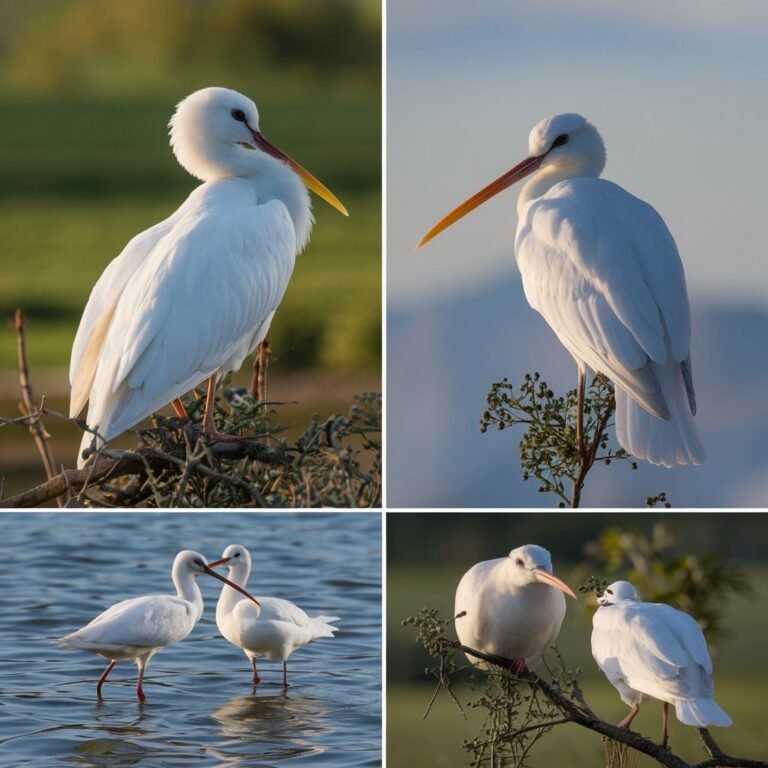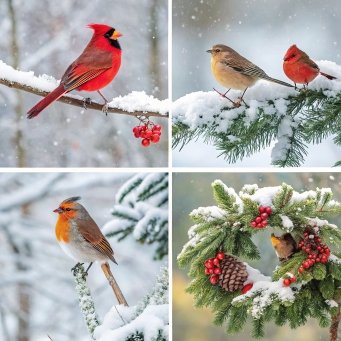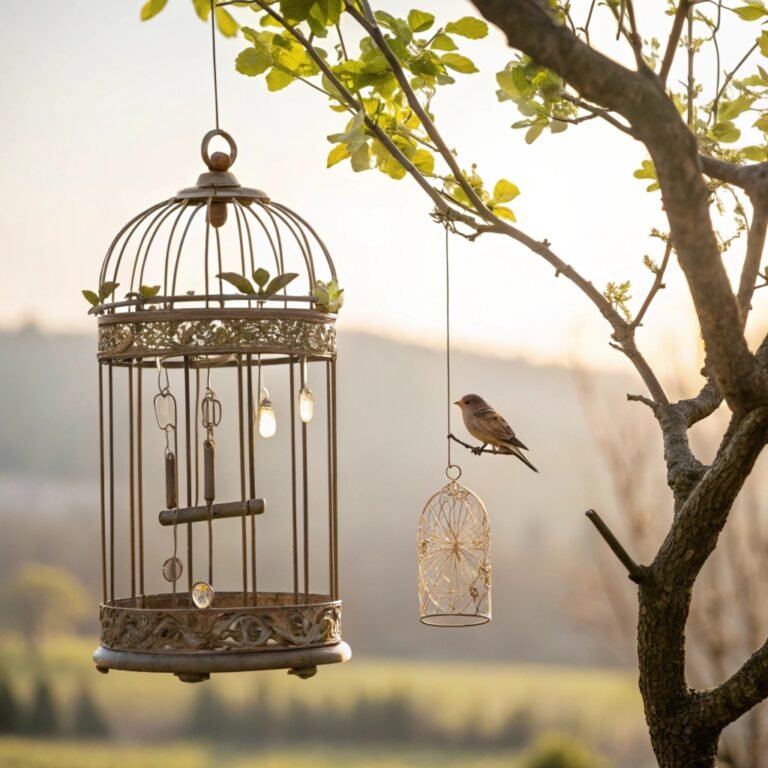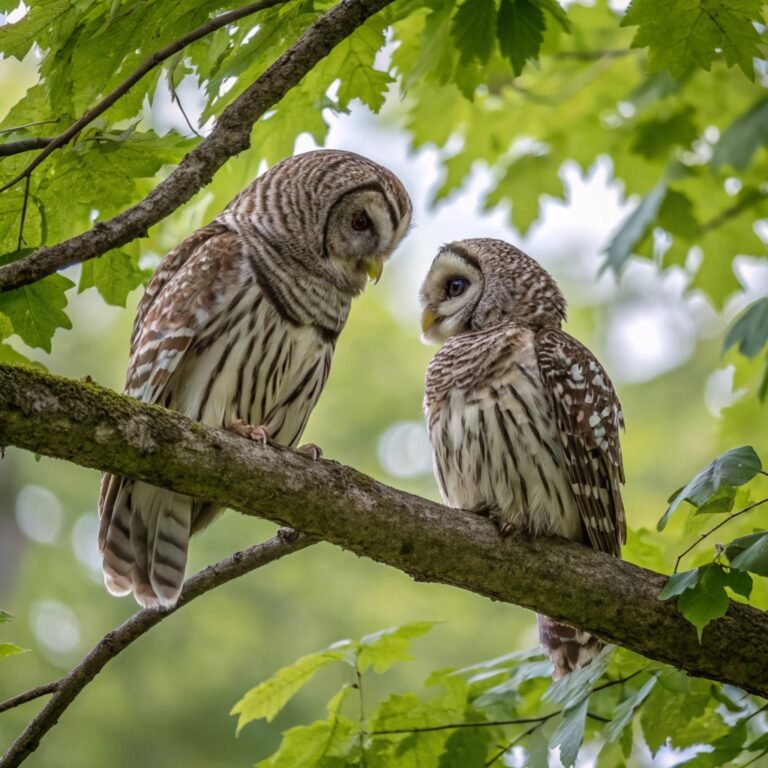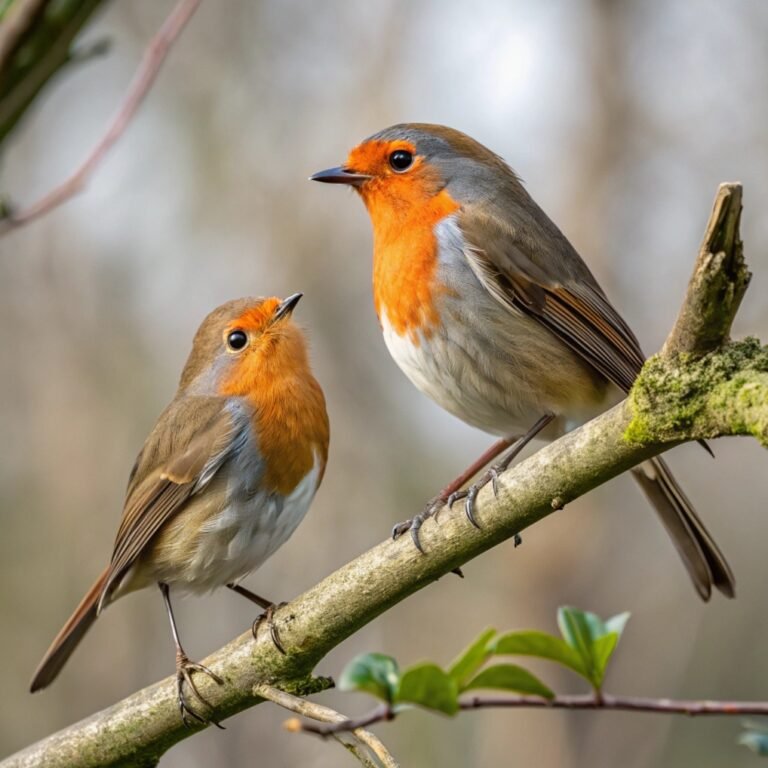10 Species of Ohio’s Woodpeckers: A Comprehensive Guide to Colorful and Fascinating Species in the Buckeye State
Ohio’s diverse landscapes, vast open fields, provide an ideal habitat for a variety of woodpeckers species.
These fascinating birds are known for their unique adaptations and important roles in the ecosystem.
In this comprehensive guide, we’ll explore the ten woodpecker species found in Ohio, delving into their characteristics, behaviors, and habitats.
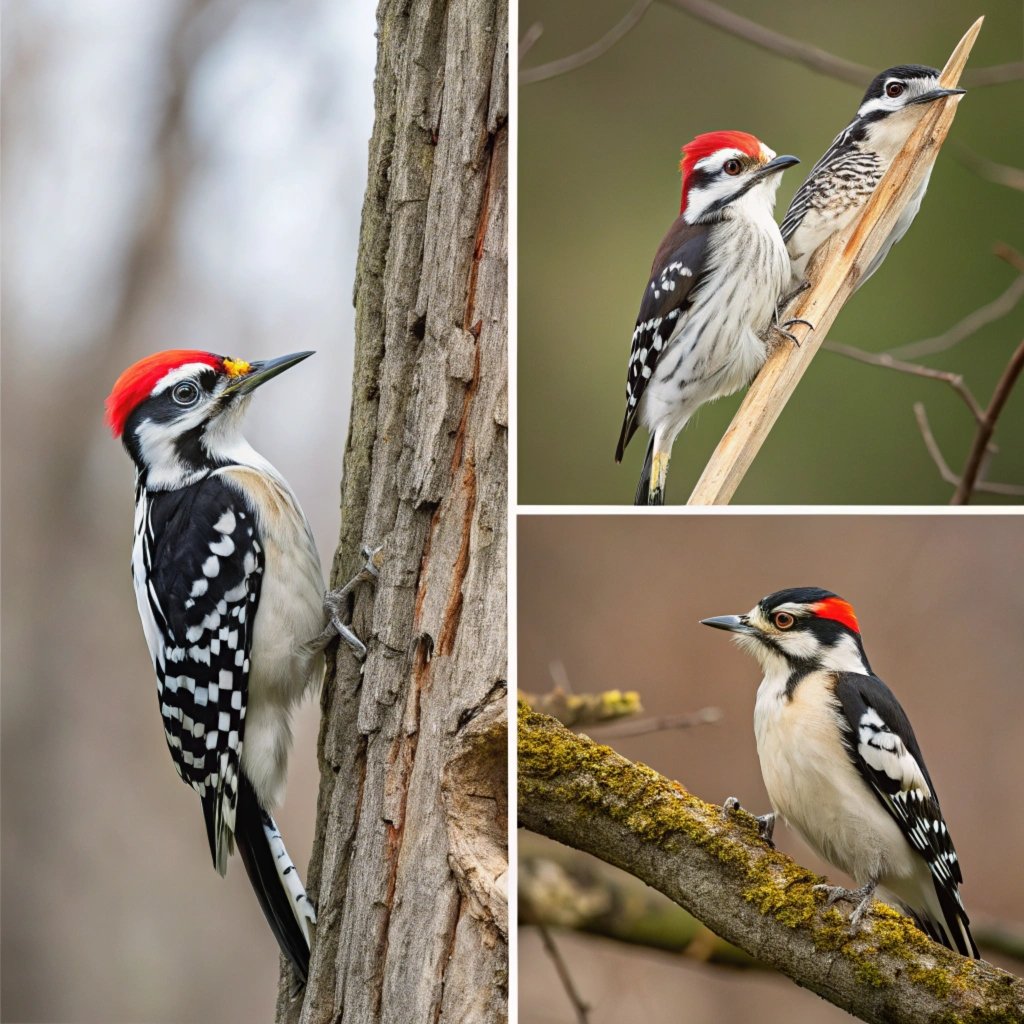
Key Takeaways:
- Birdwatchers in Ohio can enjoy a diverse range of species, from common backyard visitors to rare migratory birds, throughout the year.
- Ohio is home to ten woodpecker species, ranging from the common Downy Woodpecker to the rare Red-cockaded Woodpecker.
- Woodpeckers play crucial roles in Ohio’s ecosystems, controlling insect populations and creating nesting cavities for other species.
- The Northern Cardinal, Ohio’s state bird, is a vibrant year-round resident known for its striking red plumage and beautiful songs.
- Ohio offers diverse habitats for birds, from mature forests to open fields, making it an excellent destination for birdwatching.
- Conservation efforts are essential to protect Ohio’s woodpecker species, particularly rare ones like the Red-cockaded Woodpecker.
- Backyard bird feeders, especially those offering suet and sunflower seeds, can attract a variety of woodpeckers and other bird species.
- Ohio’s woodpeckers have unique adaptations, including specialized skull structures, that allow them to thrive in their arboreal lifestyle.
- The state hosts important bird migration routes, making it a hotspot for observing various species during spring and fall migrations.
- Preserving mature forests and standing dead trees is crucial for maintaining healthy woodpecker populations in Ohio.
1. Downy Woodpecker: Ohio’s Smallest Woodpecker

The Downy Woodpecker’s adaptability and resilience make it a fascinating subject for birdwatchers and researchers alike. These small but mighty birds have developed several unique characteristics that contribute to their success in various habitats across North America.
One of the most interesting aspects of Downy Woodpeckers is their foraging behavior. Unlike larger woodpeckers, Downies can access smaller branches and twigs, allowing them to exploit food sources that other species cannot reach.
This ability gives them a competitive edge in both natural and urban environments. Their diet is diverse, including not only insects but also seeds and berries, making them well-equipped to survive in different seasons and habitats.
Downy Woodpeckers also play a crucial role in forest ecosystems. By creating nesting cavities, they inadvertently provide homes for other cavity-nesting species such as chickadees, nuthatches, and even some small mammals.
This makes them important contributors to biodiversity in their habitats. Their social behavior is another intriguing aspect of Downy Woodpeckers. During the non-breeding season, they often join mixed-species flocks, benefiting from the increased vigilance against predators that larger groups provide.
This behavior showcases their ability to cooperate with other bird species for mutual benefit. Downy Woodpeckers have also developed remarkable physiological adaptations to survive harsh winter conditions.
2. Hairy Woodpecker: The Downy’s Larger Lookalike
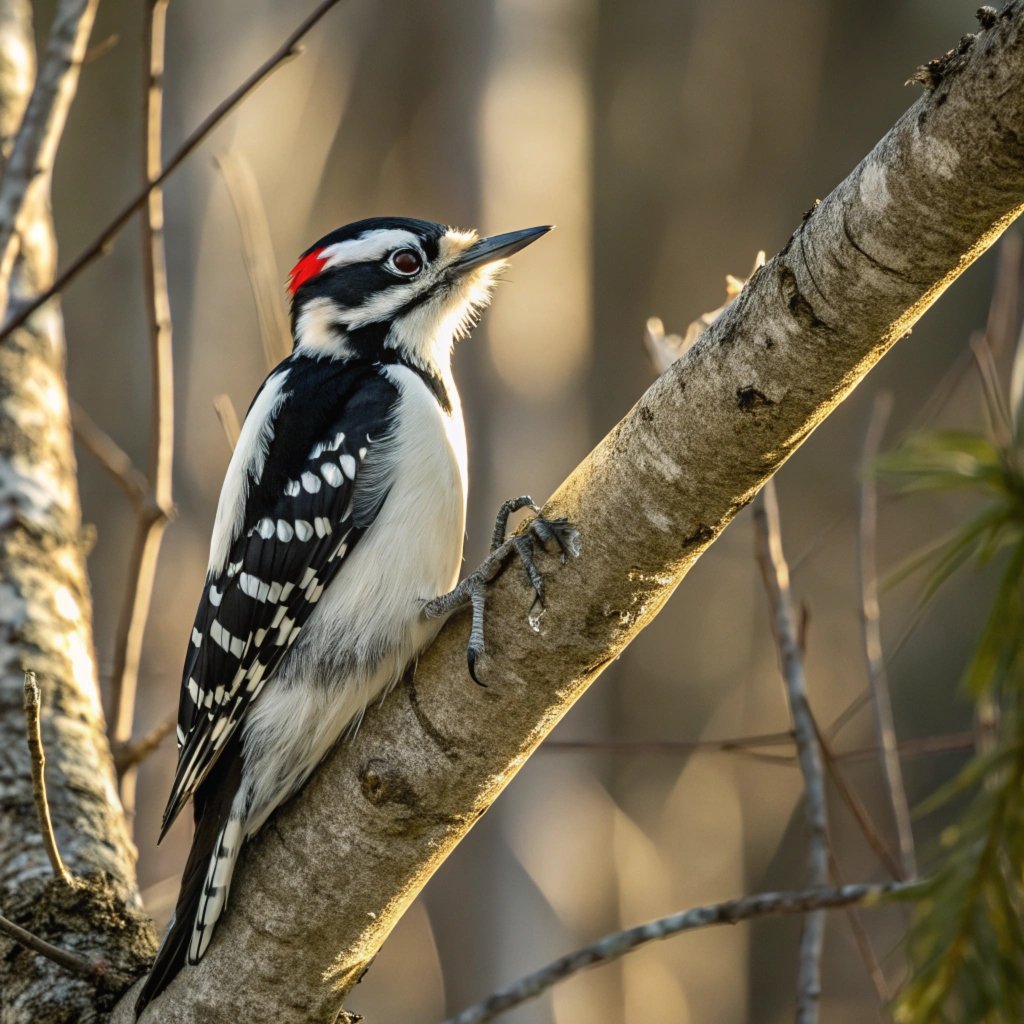
The Hairy Woodpecker (Dryobates villosus) is a fascinating and adaptable species that plays a crucial role in forest ecosystems across North America.
These birds are known for their remarkable foraging abilities, using their strong bills to excavate deep into tree bark in search of wood-boring insects. Their diet primarily consists of bark beetles and their larvae, which makes them valuable allies in controlling forest pests.
Hairy Woodpeckers exhibit interesting behavioral adaptations that set them apart from their smaller lookalike, the Downy Woodpecker. For instance, they are more likely to forage on the main trunks and larger branches of trees, while Downy Woodpeckers tend to explore smaller branches.
This niche differentiation allows both species to coexist in the same habitats with minimal competition. In terms of habitat preferences, Hairy Woodpeckers show remarkable flexibility.
While they are commonly associated with mature deciduous and coniferous forests, they have also adapted to urban and suburban environments. They can be found in parks, cemeteries, and even residential areas with sufficient tree cover.
This adaptability has contributed to their widespread distribution across North America. Interestingly, Hairy Woodpeckers have been observed engaging in opportunistic feeding behaviors.
They sometimes follow Pileated Woodpeckers, taking advantage of the larger holes these birds create to access insects that might have been missed. Additionally, they have been known to drink sap from wells created by sapsuckers and have even been observed pecking into sugar cane to access its sweet juice.
The breeding behavior of Hairy Woodpeckers is also noteworthy. They form monogamous pairs and work together to excavate nesting cavities in dead or dying trees.
Both parents share incubation duties and care for their young, typically raising one brood per year. These nesting cavities, once abandoned, often become valuable homes for other cavity-nesting species, highlighting the Hairy Woodpecker’s role as an ecosystem engineer.
3. Red-bellied Woodpecker: The Misnamed Beauty
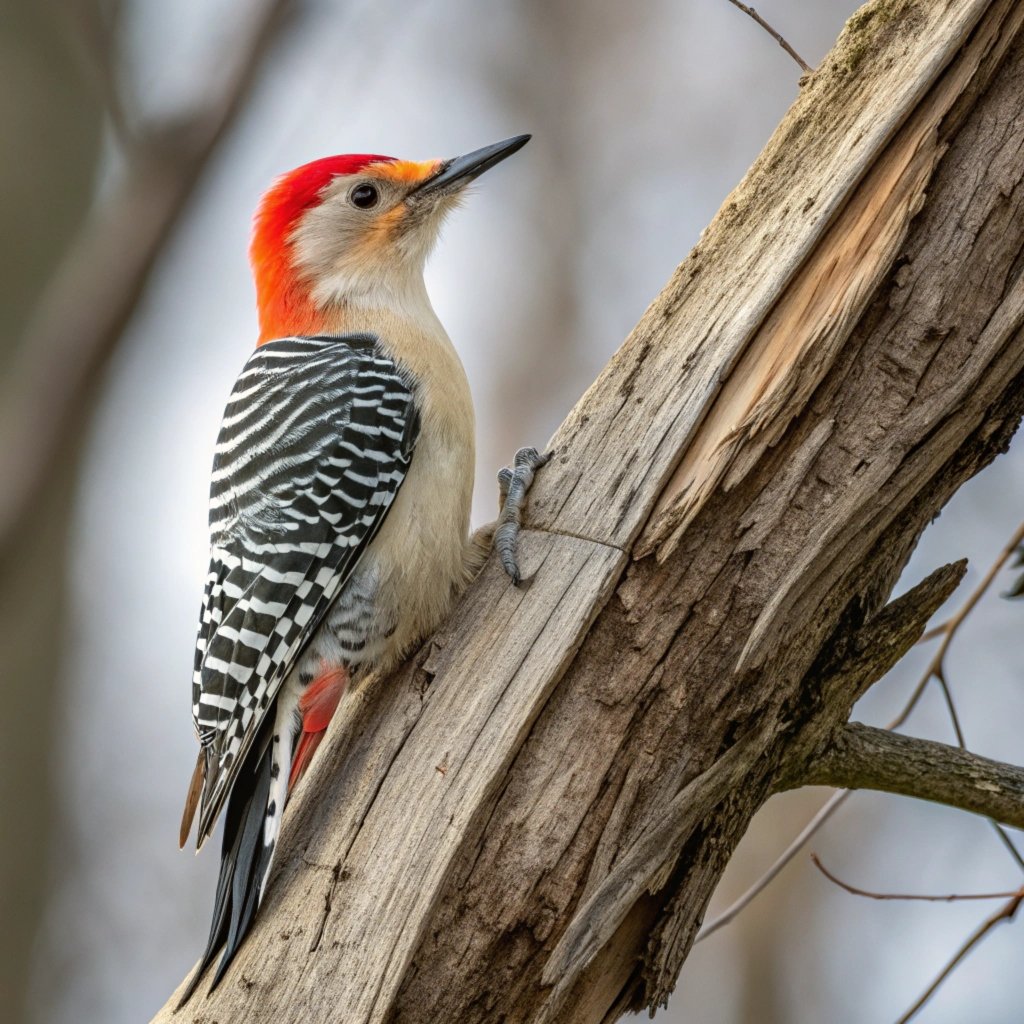
The Red-bellied Woodpecker (Melanerpes carolinus) is a captivating species that plays a vital role in Ohio’s woodland ecosystems. Despite its name, the red belly is often difficult to see, with the bird’s most striking feature being its barred black and white back and bright red cap.
These medium-sized woodpeckers are common residents in Ohio’s forests, woodlands, and even suburban areas with mature trees.Red-bellied Woodpeckers are highly adaptable birds, capable of thriving in various habitats.
They prefer deciduous forests but can also be found in pine-hardwood forests, river bottoms, and wetlands. Their presence often indicates a healthy, diverse woodland ecosystem.
One of the most interesting aspects of Red-bellied Woodpeckers is their diverse diet. While they primarily feed on insects, spiders, and other arthropods, they also consume a wide variety of plant materials.
Their diet includes acorns, nuts, pine cones, seeds, and fruits ranging from grapes to oranges. This omnivorous diet allows them to adapt to seasonal changes in food availability and contributes to their success in various habitats.
Red-bellied Woodpeckers have several unique adaptations that aid in their foraging behavior. Their long, sticky tongue with a barbed tip is perfectly suited for extracting insects from crevices in tree bark.
Interestingly, male Red-bellied Woodpeckers have a wider tongue tip and longer bill than females, allowing them to reach deeper into crevices.
This slight difference in anatomy leads to a division of foraging areas between males and females, with males typically foraging on tree trunks while females focus on tree limbs.
Another fascinating behavior of Red-bellied Woodpeckers is their habit of caching food. Like some other woodpecker species, they store extra food for later consumption.
They wedge seeds, nuts, and other food items deep within existing crevices in trees, ensuring a food supply during lean times. This behavior not only helps the woodpeckers survive periods of food scarcity but also plays a role in seed dispersal within forest ecosystems.
Red-bellied Woodpeckers are also known for their nesting habits. They excavate new nest cavities each year, often in dead trees or dead limbs of live trees. The same pair may return to the same tree year after year, creating a new cavity below the previous year’s nest.
4. Red-headed Woodpecker: The Striking Redhead
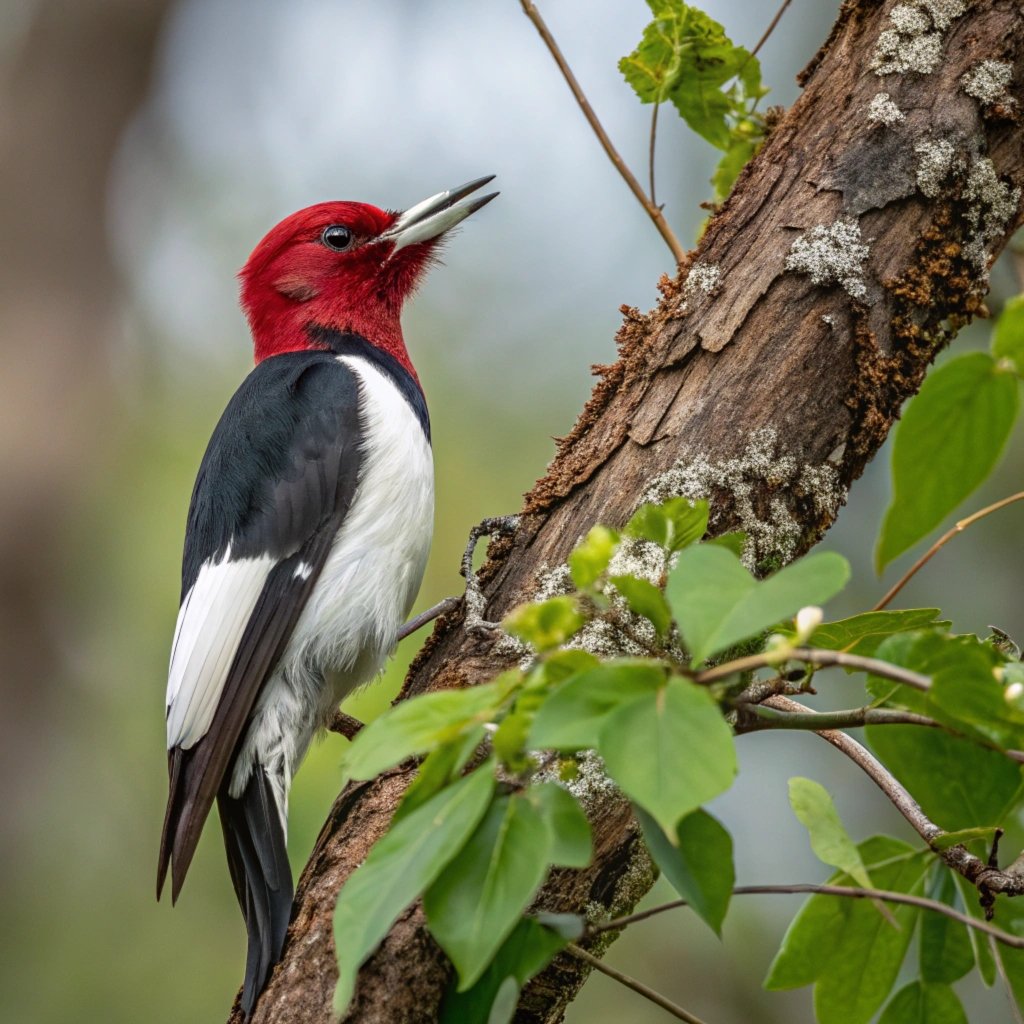
The Red-headed Woodpecker (Melanerpes erythrocephalus) is perhaps the most visually striking of Ohio’s woodpeckers. As its name suggests, this species boasts a fully red head, contrasting sharply with its black and white body.
These woodpeckers prefer open woodlands, especially those near water bodies. In Ohio, they can often be found in areas with dead trees, which they use for nesting and foraging.
Red-headed Woodpeckers are unique among North American woodpeckers in their habit of catching insects in flight.
They’re also known for their food-storing behavior, often caching nuts and seeds in tree crevices for later consumption.
Unfortunately, Red-headed Woodpecker populations have declined in recent years due to habitat loss and competition with European Starlings for nesting cavities.
Conservation efforts in Ohio focus on preserving suitable habitats and providing nesting boxes to support these beautiful birds.
5. Northern Flicker: The Ground-Foraging Woodpecker

The Northern Flicker (Colaptes auratus) stands out among Ohio’s woodpeckers for its unique habits and appearance.
Unlike most woodpeckers, Northern Flickers spend a significant amount of time foraging on the ground, using their long, barbed tongues to extract ants and other insects from the soil.
These large woodpeckers have brown plumage with black spots and bars, and a distinctive black crescent on their chest. When in flight, they reveal bright yellow underwings (in eastern subspecies).
Male Northern Flickers have a black “mustache” stripe, which is absent in females. These woodpeckers are common in Ohio year-round but are more visible during migration periods.
They inhabit a variety of wooded habitats, including forest edges, open woodlands, and suburban areas with large trees. Northern Flickers play a crucial role in controlling ant populations and creating nesting cavities for other bird species.
6. Pileated Woodpecker: Ohio’s Woodland Giant

The Pileated Woodpecker (Dryocopus pileatus) is the largest woodpecker species in Ohio, rivaling the size of a crow. These impressive birds are easily identifiable by their large size, predominantly black plumage, and distinctive red crest.
Pileated Woodpeckers are typically found in mature forests with large, dead trees that provide both food and nesting sites.
Their powerful bills allow them to excavate large, rectangular holes in search of their primary prey: carpenter ants and wood-boring beetle larvae.
The drumming of a Pileated Woodpecker is loud and resonant, often echoing through the forest. While once rare due to widespread deforestation, Pileated Woodpeckers have made a comeback in Ohio as forests have regrown.
Their presence in an area often indicates a healthy, mature forest ecosystem. These woodpeckers play a crucial role in creating habitat for other cavity-nesting species and controlling insect populations in Ohio’s woodlands.
7. Yellow-bellied Sapsucker: The Migratory Sap-Feeder
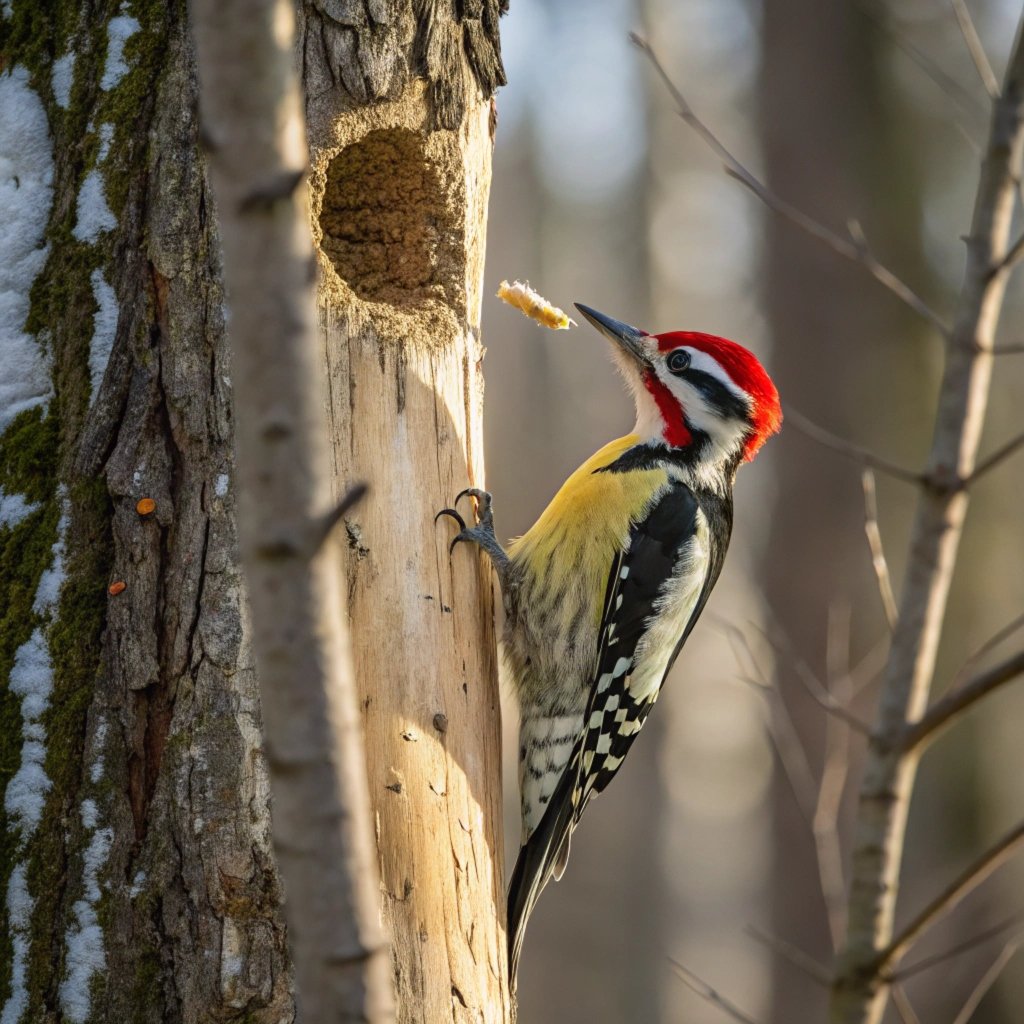
The Yellow-bellied Sapsucker (Sphyrapicus varius) is a migratory woodpecker species that passes through Ohio during spring and fall migrations.
These medium-sized woodpeckers are named for their pale yellow underparts and their unique feeding behavior. Yellow-bellied Sapsuckers drill neat rows of small holes in tree bark, creating “sap wells” from which they feed on the flowing sap and trapped insects.
This behavior not only provides food for the sapsuckers but also attracts other wildlife, including hummingbirds and insects. In Ohio, these woodpeckers are most commonly seen in deciduous and mixed forests, particularly those with maple and birch trees.
Male Yellow-bellied Sapsuckers have a red throat and crown, while females have a white throat and red crown. Their presence in an area can be detected by their distinctive drumming pattern and the orderly rows of holes on tree trunks.
8. Red-cockaded Woodpecker: Ohio’s Rare Pine Specialist
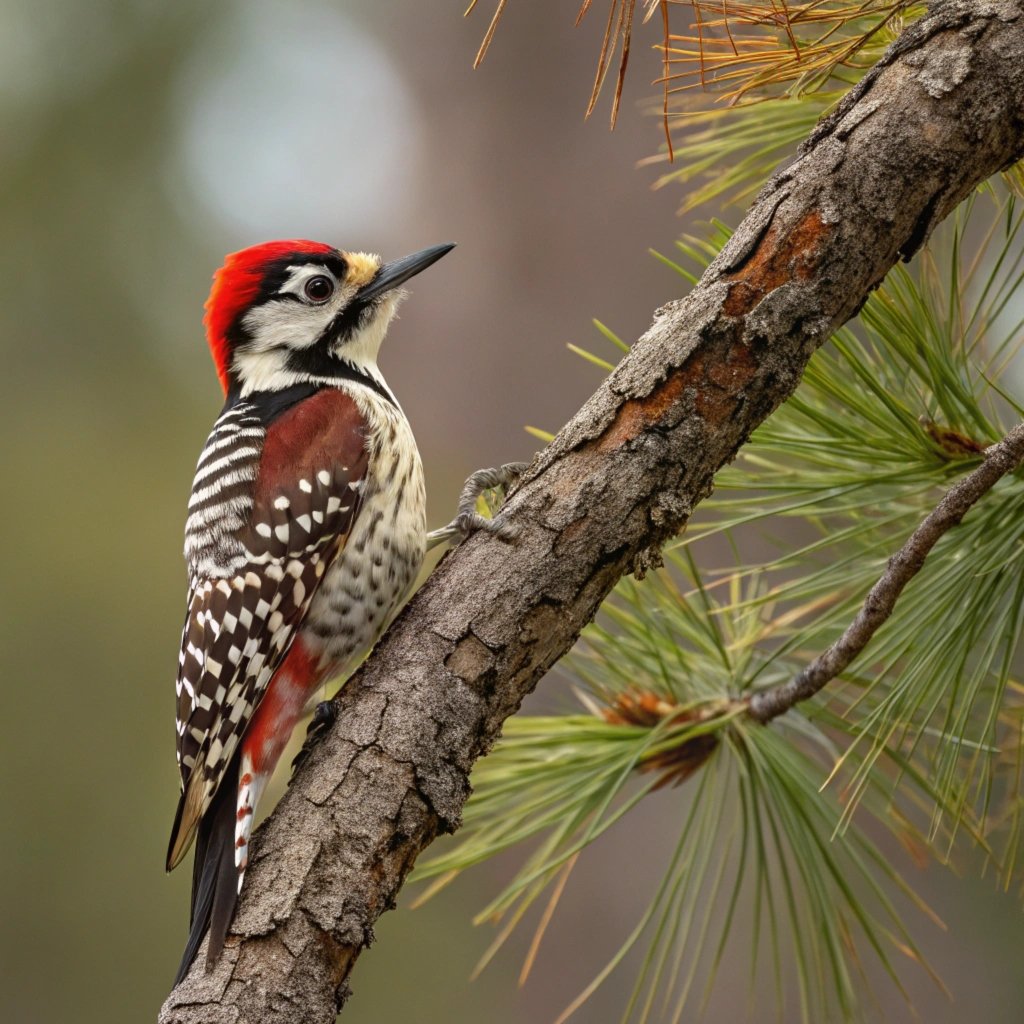
The Red-cockaded Woodpecker (Dryobates borealis) is a rare and federally endangered species that occasionally ventures into southern Ohio. These small woodpeckers are specialists of mature pine forests, particularly longleaf pine ecosystems.
Red-cockaded Woodpeckers are unique among North American woodpeckers in their habit of excavating nest cavities in living pine trees.
They have a black and white barred back, white cheek patches, and a black cap. The “red cockade” that gives them their name is actually a tiny red streak on the sides of the male’s black cap, which is rarely visible.
In Ohio, sightings of Red-cockaded Woodpeckers are extremely rare and typically occur in the southernmost parts of the state where suitable pine habitats exist.
Conservation efforts for this species focus on preserving and restoring mature pine forests, which are crucial for their survival.
9. Black-backed Woodpecker: The Fire-Loving Visitor
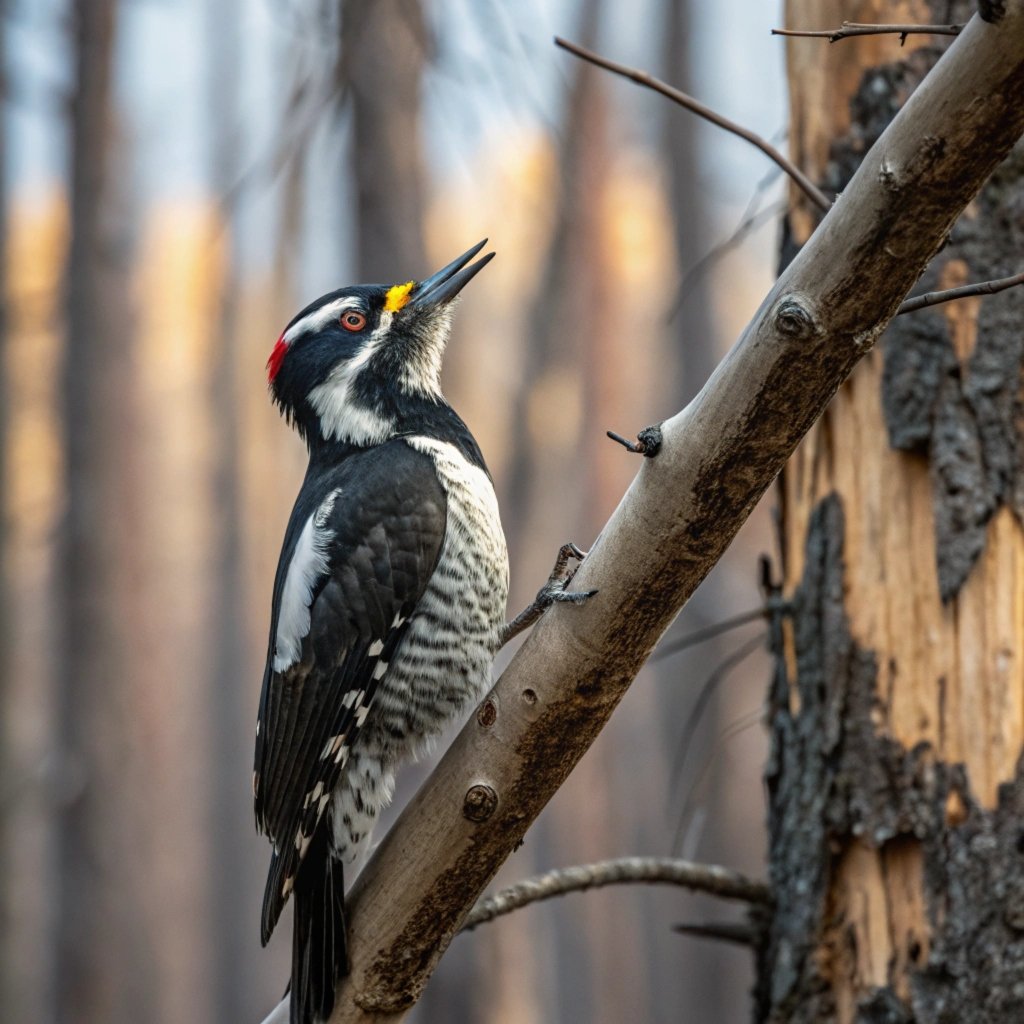
The Black-backed Woodpecker (Picoides arcticus) is an occasional visitor to northern Ohio, particularly following forest fires or insect outbreaks.
These medium-sized woodpeckers are easily identifiable by their solid black backs, which provide excellent camouflage against charred tree trunks.
Male Black-backed Woodpeckers have a yellow cap, while females have a solid black head. These woodpeckers are specialists in recently burned forests, where they feed on wood-boring beetle larvae that infest fire-killed trees.
In Ohio, Black-backed Woodpeckers are rare and typically only seen during irruptive movements when food becomes scarce in their usual northern habitats.
When present, they can be found in coniferous or mixed forests, particularly those affected by recent disturbances.
Their presence in an area often indicates a healthy, naturally functioning forest ecosystem that includes periodic disturbances like fires or insect outbreaks.
10. American Three-toed Woodpecker: The Northern Rarity

The American Three-toed Woodpecker (Picoides dorsalis) is a rare visitor to Ohio’s northernmost regions.
As their name suggests, these woodpeckers have only three toes on each foot, an adaptation that allows them to lean back further while striking at tree bark.
These small woodpeckers have a barred black and white back and sides, with males sporting a yellow cap.
American Three-toed Woodpeckers are typically found in northern boreal and montane coniferous forests, making their appearance in Ohio extremely uncommon.
When they do venture into the state, it’s usually during winter irruptions when food becomes scarce in their typical habitats.
These woodpeckers specialize in feeding on bark beetles and are often found in areas with recent insect outbreaks or forest fires. In Ohio, any sighting of an American Three-toed Woodpecker would be a rare and exciting event for birdwatchers.
Woodpecker Adaptations: Nature’s Tree Surgeons
Woodpeckers possess a range of fascinating adaptations that allow them to thrive in their arboreal lifestyle.
Their strong legs and zygodactyl toes (two toes facing forward and two backward) provide a firm grip on vertical surfaces. Stiff tail feathers act as a prop, supporting their weight as they cling to tree trunks.
Perhaps most remarkably, woodpeckers have evolved specialized skull structures to protect their brains from the repeated impacts of pecking.
These adaptations include a flexible skull that absorbs shock, strong neck muscles, and a tongue that wraps around the brain for added cushioning.
These unique features allow woodpeckers to perform their vital roles in Ohio’s ecosystems, from controlling insect populations to creating nesting cavities for various wildlife species.
Conservation and Habitat Preservation for Ohio’s Woodpeckers
The preservation of Ohio’s woodpecker species relies heavily on habitat conservation. Mature forests, dead and decaying trees, and diverse woodland ecosystems are crucial for the survival of these birds.
Conservation efforts in Ohio focus on maintaining and restoring these habitats, particularly in areas where rare species like the Red-cockaded Woodpecker might occur.
Homeowners can contribute to woodpecker conservation by leaving dead trees standing when safe to do so, as these provide important foraging and nesting sites.
Additionally, providing suet feeders and maintaining native plant species can help support woodpecker populations in urban and suburban areas.
By protecting and enhancing woodpecker habitats, we not only ensure the survival of these fascinating birds but also contribute to the overall health and biodiversity of Ohio’s ecosystems.
FAQs
What is the most common woodpecker in Ohio?
The Downy Woodpecker is the most common woodpecker species in Ohio. These small, adaptable birds are frequently seen in a variety of habitats, including forests, parks, and backyard gardens.
How can I attract woodpeckers to my backyard?
To attract woodpeckers to your backyard, consider installing suet feeders, offering black oil sunflower seeds, and maintaining native trees and shrubs. Dead trees or snags, when safe to keep, can also provide excellent foraging and nesting opportunities for woodpeckers.
Are any woodpeckers in Ohio endangered?
While most woodpecker species in Ohio are not endangered, the Red-cockaded Woodpecker is federally endangered and extremely rare in the state. Conservation efforts are ongoing to protect and restore their preferred pine forest habitats.
How do woodpeckers avoid brain damage from pecking?
Woodpeckers have evolved several adaptations to prevent brain damage, including a flexible skull that absorbs shock, strong neck muscles, and a tongue that wraps around the brain for added cushioning. These features allow them to peck at trees without injury.
What role do woodpeckers play in Ohio’s ecosystems?
Woodpeckers play crucial roles in Ohio’s ecosystems. They help control insect populations, create nesting cavities used by other wildlife species, and serve as indicator species for forest health. Their presence often signifies a diverse and thriving woodland habitat.

Hello, I’m Emily Price, the founder of Birds Affection. As a passionate bird enthusiast and spiritual seeker, I’ve always been fascinated by the symbolic meanings and mystical connections between birds and our lives. On this website, I share my knowledge and insights on the spiritual significance of various bird species, exploring their roles as messengers, guides, and teachers. Through my writing, I aim to inspire and educate others on the profound wisdom and beauty that birds bring to our world. Join me on this journey as we delve into the enchanting realm of bird symbolism and discover the hidden meanings behind these magnificent creatures.


